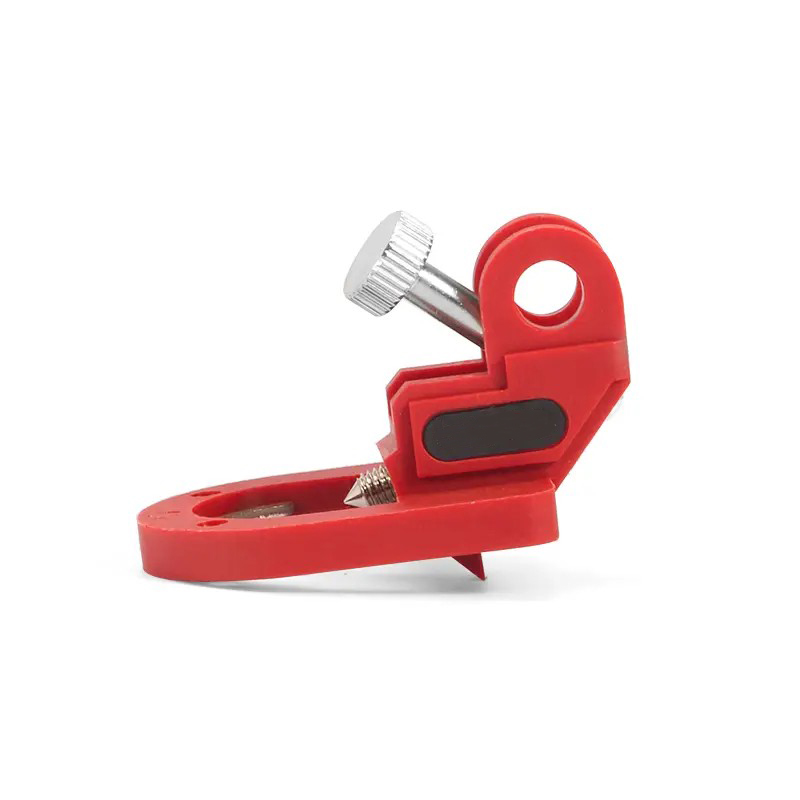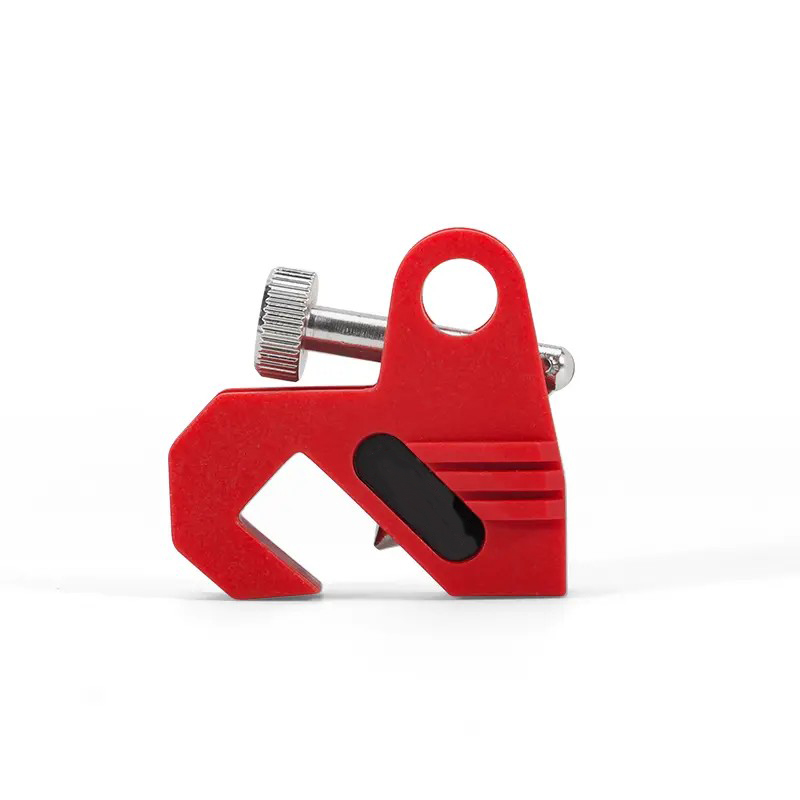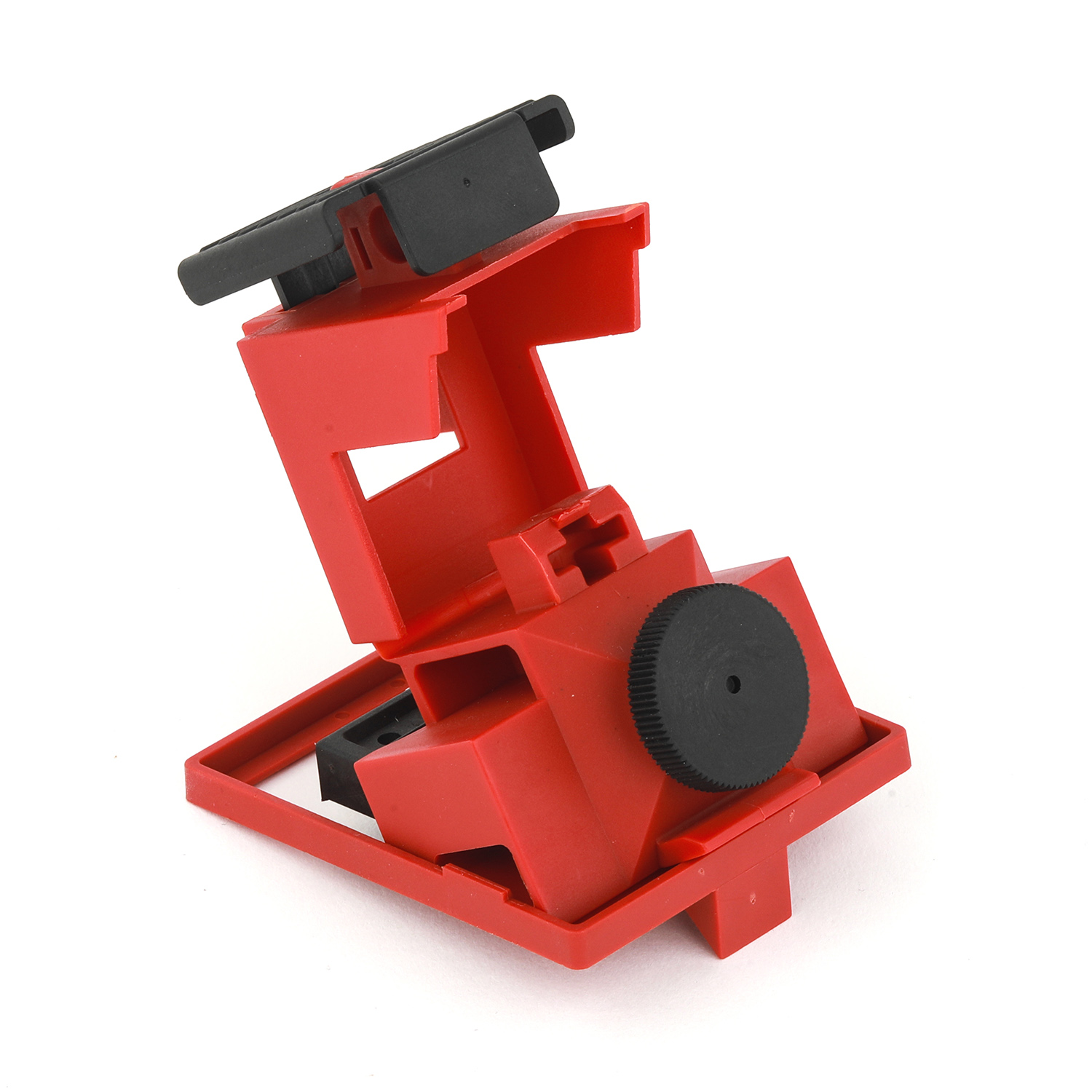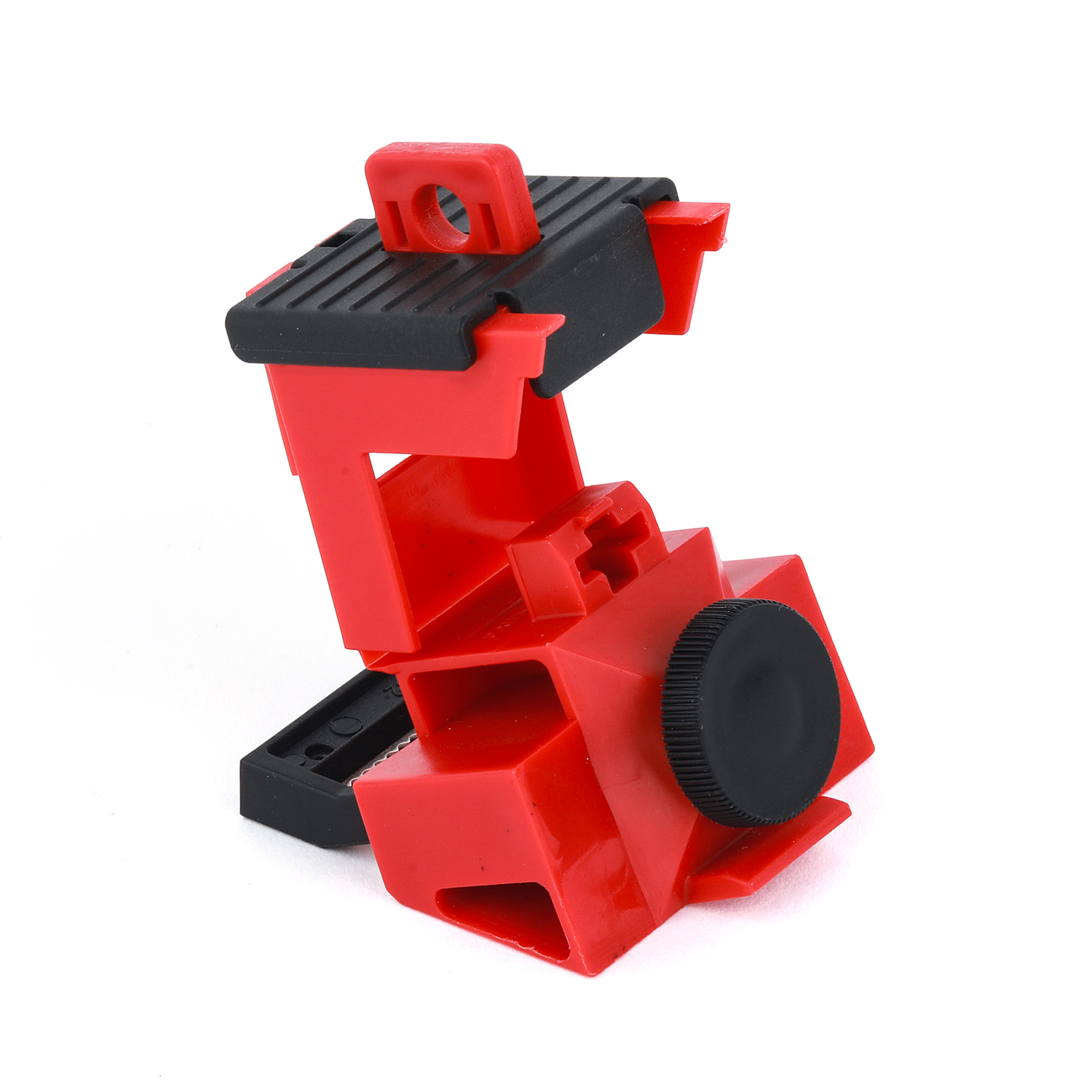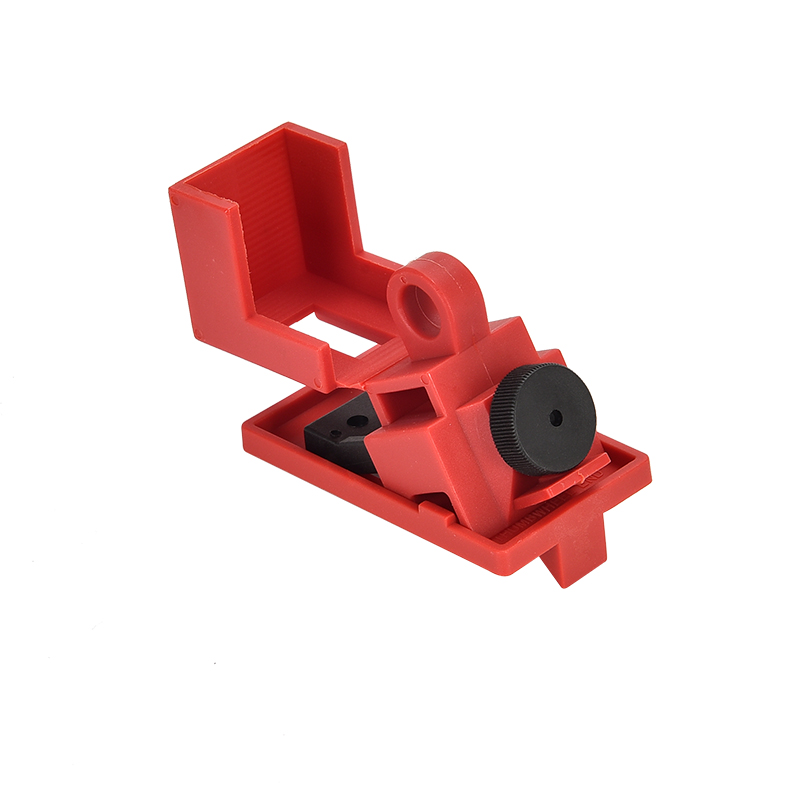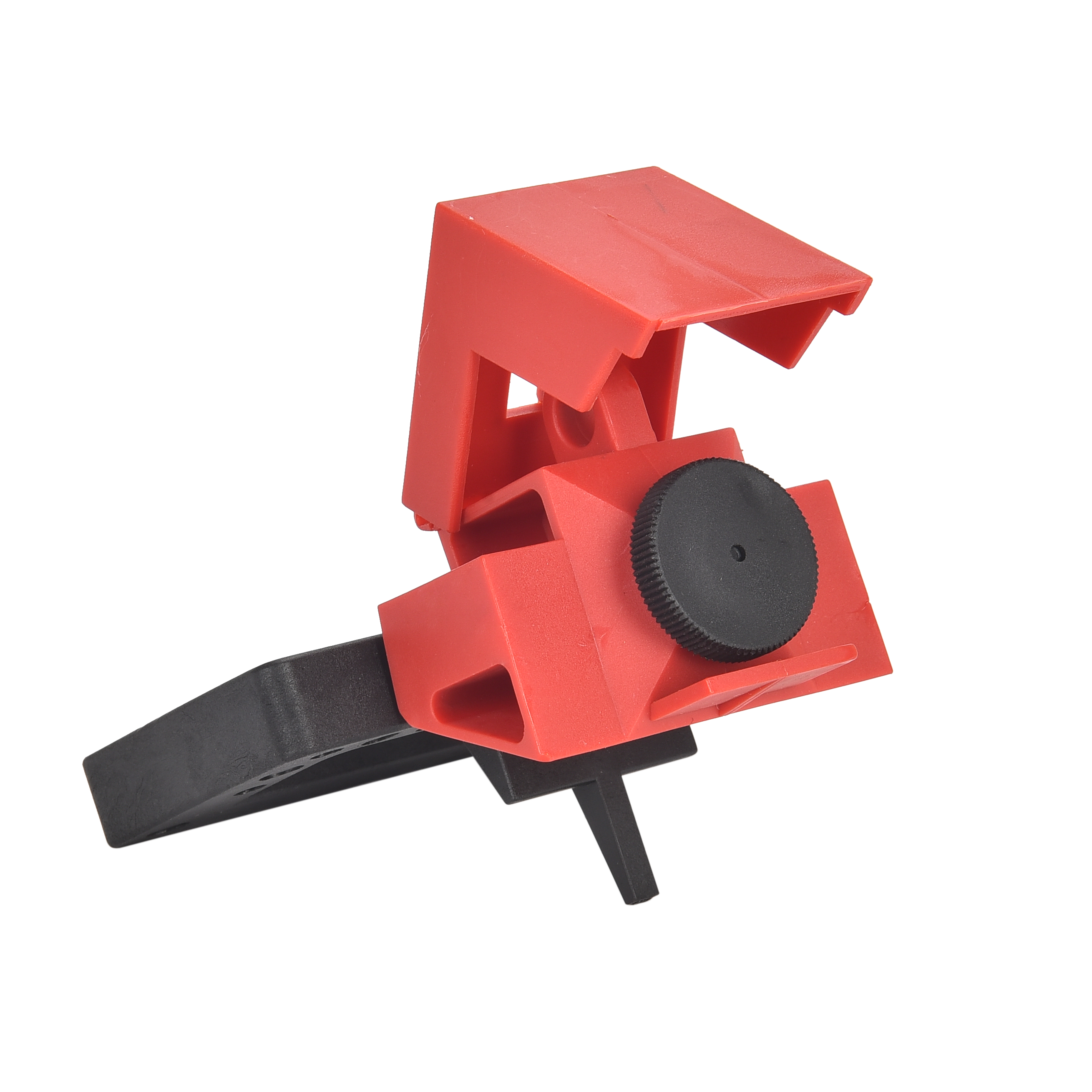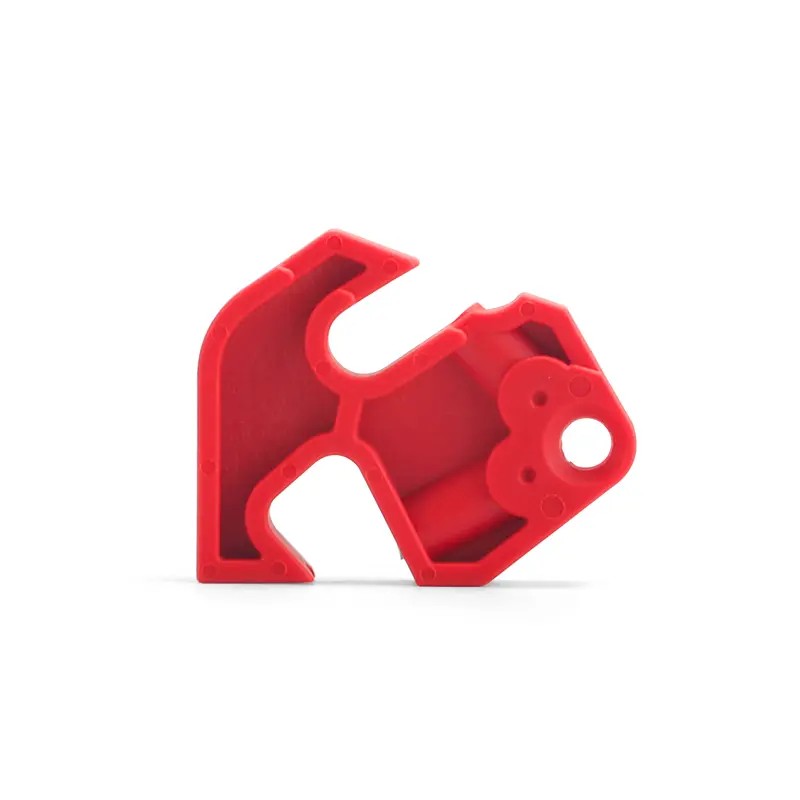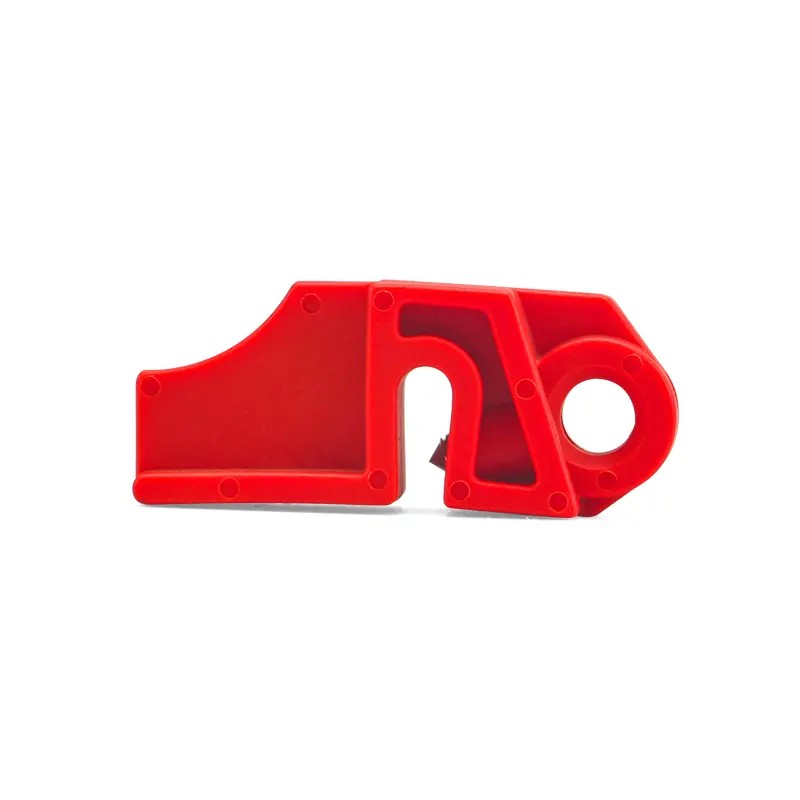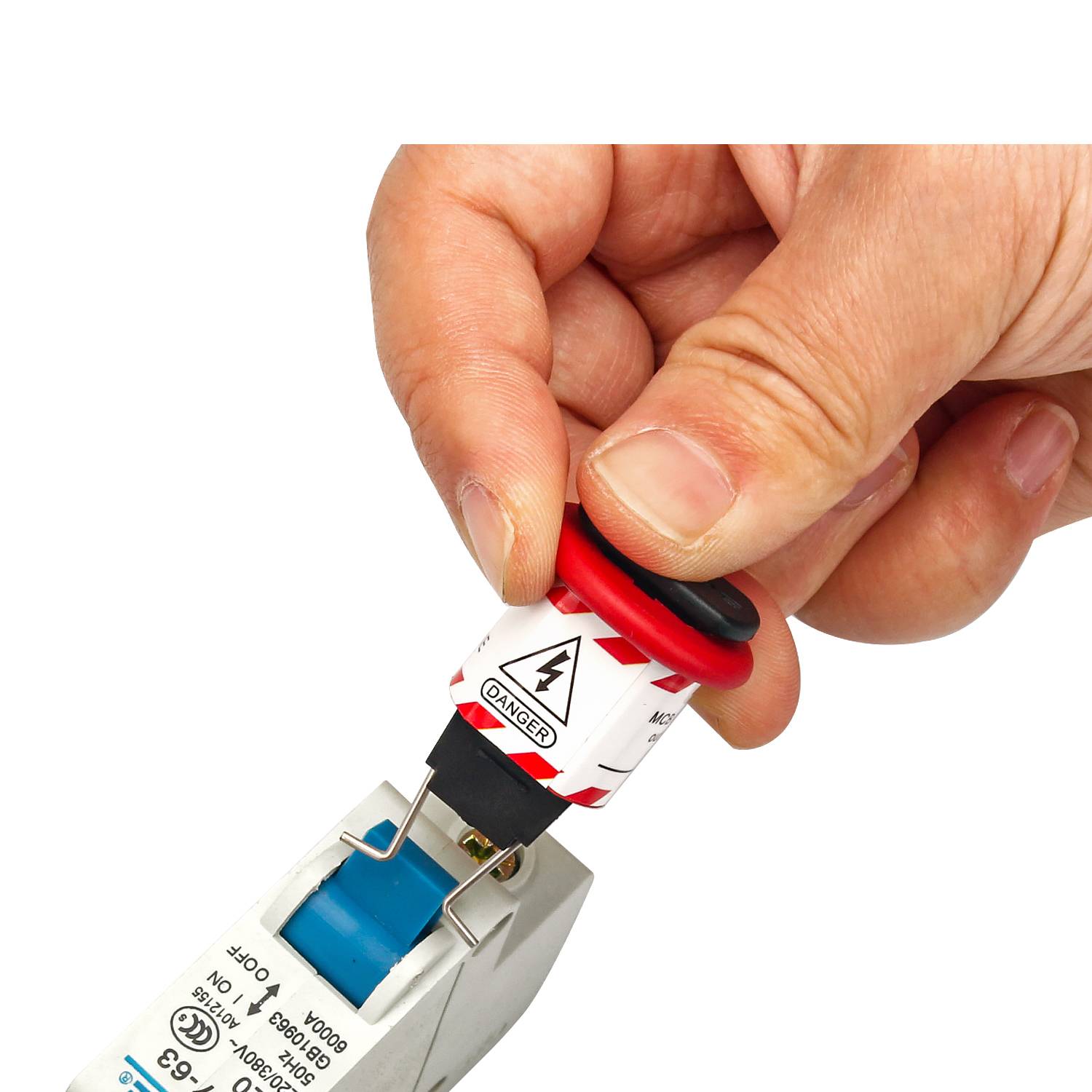Electrical Equipment Lockouts
-
EP-D15 Lightweight electrical equipment lockouts to prevent accidental activation
Universal Miniature Circuit Breaker Lockout Device.Locks virtually all miniature ISO/DIN circuit breakers throughout the world.Thumb turn dial screw for easy attachment – no tools required!Dial is inaccessible in the locked position to prevent removal.Safety padlock can be applied horizontally or vertically.Can be mounted side-by-side on adjacent miniature circuit breakers.Durable thermoplastic material is chemical resistant and performs effectively in extreme environments.Laser engraved your LO
Inquiry -
EP-D14 Corrosion resistance quick installation electrical equipment lockouts
Universal Miniature Circuit Breaker Lockout Device.Locks virtually all miniature ISO/DIN circuit breakers throughout the world.Thumb turn dial screw for easy attachment – no tools required!Dial is inaccessible in the locked position to prevent removal.Safety padlock can be applied horizontally or vertically.Can be mounted side-by-side on adjacent miniature circuit breakers.Durable thermoplastic material is chemical resistant and performs effectively in extreme environments.Laser engraved your LO
Inquiry -
EP-D13N Nylon PA new oversized clamp-on electrical equipment lockouts
a.Clamp-On Circuit Breaker Lockout Made from polypropylene ABSand PA.b.Clamp-On Circuit Breaker Lockout Use thumbscrew to clamp lockout securely onto switch tongue, then pull cover and lock in place to prevent clamp from being loosened.c.Clamp-On Circuit Breaker Lockout New blade design provides tighter grip with less torque on thumb screw.d.Clamp-On Circuit Breaker Lockout Detachable cleats expand the range of applicable breakers.e.This Clamp-On Circuit Breaker Lockout can use together with a s
Inquiry -
EP-D12N Versatile wear resistance electrical equipment lockouts
a.Made from polypropylene PP and PA.b.Use thumbscrew to clamp lockout securely onto switch tongue, then pull cover and lock in place to prevent clamp from being loosened.c.New blade design provides tighter grip with less torque on thumb screw.d.Detachable cleats expand the range of applicable breakers.e.This circuit breaker lockout can use together with a shackle diameter≤ 7mm padlock.
Inquiry -
EP-D11N Good insulation temperature difference resistance electrical equipment lockouts
a.Made from polypropylene PP and PA.b.Use thumbscrew to clamp lockout securely onto switch tongue, then pull cover and lock in place to prevent clamp from being loosened.c.New blade design provides tighter grip with less torque on thumb screw.d.Detachable cleats expand the range of applicable breakers.e.This circuit breaker lockout can use together with a shackle diameter≤ 7mm padlock.
Inquiry -
EP-D11 Polypropylene PP and PA single-pole electrical equipment lockouts
a.Made from polypropylene PP and PA.b.Use thumbscrew to clamp lockout securely onto switch tongue, then pull cover and lock in place to prevent clamp from being loosened.c.New blade design provides tighter grip with less torque on thumb screw.d.Detachable cleats expand the range of applicable breakers.e.This circuit breaker lockout can use together with a shackle diameter≤ 7mm padlock.
Inquiry -
EP-D13 Glass-filled impact-modified nylon oversized clamp-on electrical equipment lockouts
a.Clamp-On Circuit Breaker Lockout Made from polypropylene ABSand PA.b.Clamp-On Circuit Breaker Lockout Use thumbscrew to clamp lockout securely onto switch tongue, then pull cover and lock in place to prevent clamp from being loosened.c.Clamp-On Circuit Breaker Lockout New blade design provides tighter grip with less torque on thumb screw.d.Clamp-On Circuit Breaker Lockout Detachable cleats expand the range of applicable breakers.e.This Clamp-On Circuit Breaker Lockout can use together with a s
Inquiry -
EP-D05-6 Dual one safety padlock electrical equipment lockouts
●Made from rugged reinforced PA●Can lock it with screw driver●Can accommodate one safety padlock with shackle Dia.s7mm●Can lock all kinds of circuit breakers
Inquiry -
EP-D05-5 Yellow reinforced nylon PA electrical equipment lockouts
●Made from rugged reinforced PA●Can lock it with screw driver●Can accommodate one safety padlock with shackle Dia.s7mm●Can lock all kinds of circuit breakers
Inquiry -
EP-D05-4 Red miniature circuit breaker electrical equipment lockouts
●Made from rugged reinforced PA●Can lock it with screw driver●Can accommodate one safety padlock with shackle Dia.s7mm●Can lock all kinds of circuit breakers
Inquiry
PRODUCT ADVANTAGES
-
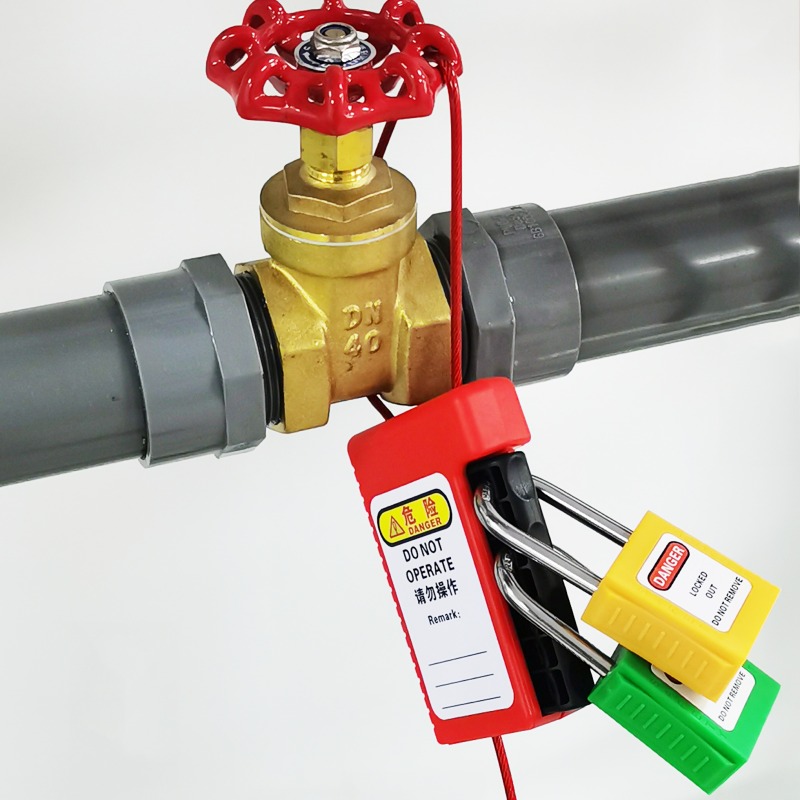
Perforated cable lock
Product model: EP- C15
Description: Lock single or multiple adjacent switches. After the key is pulled out, the steel cable can still be tightened infinitely, and multiple people can be locked at the same time. -
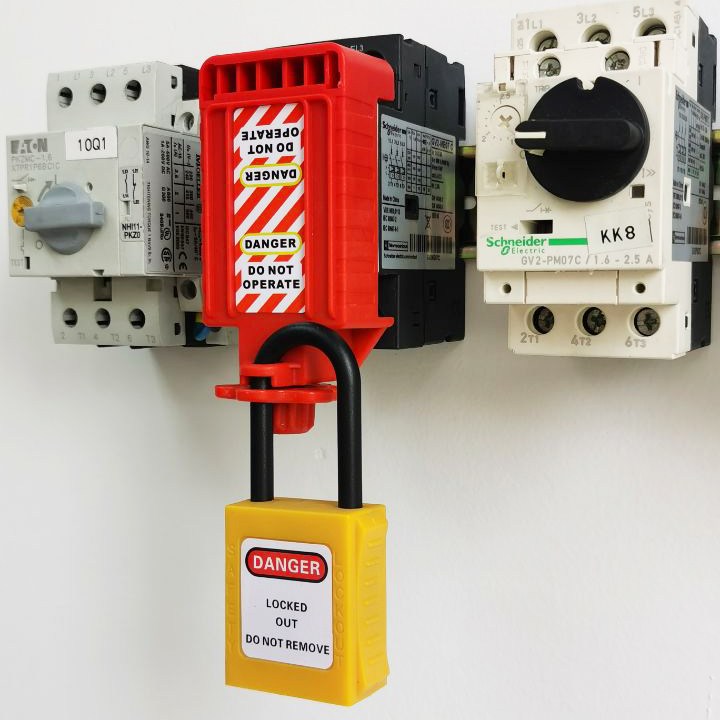
Circuit breaker lock
Model: EP-E26
Description: Mainly used for locking motor/motor circuit breaker switches
Features:
1. Made of reinforced nylon, strong and durable
2. Metal tooth clamping design, more stable locking
3. Loosen/tighten by hand, fast locking
4. Locking length: 41-57mm, width 38mm, height 22mm -
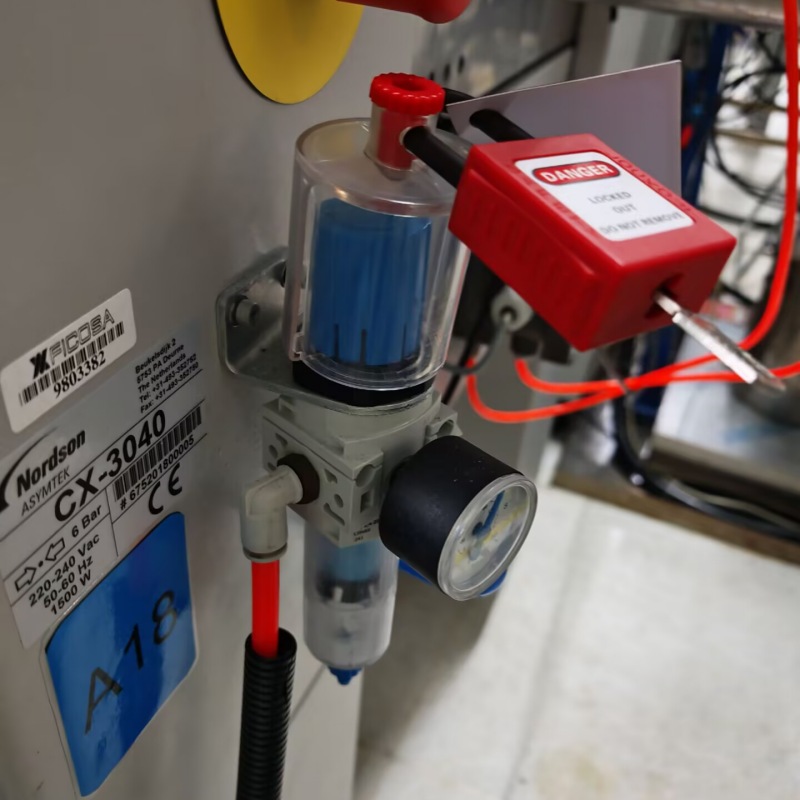
Button switch lock
Product model: EP-E39
Description: It can lock button switches with labels and various button switches at close range -
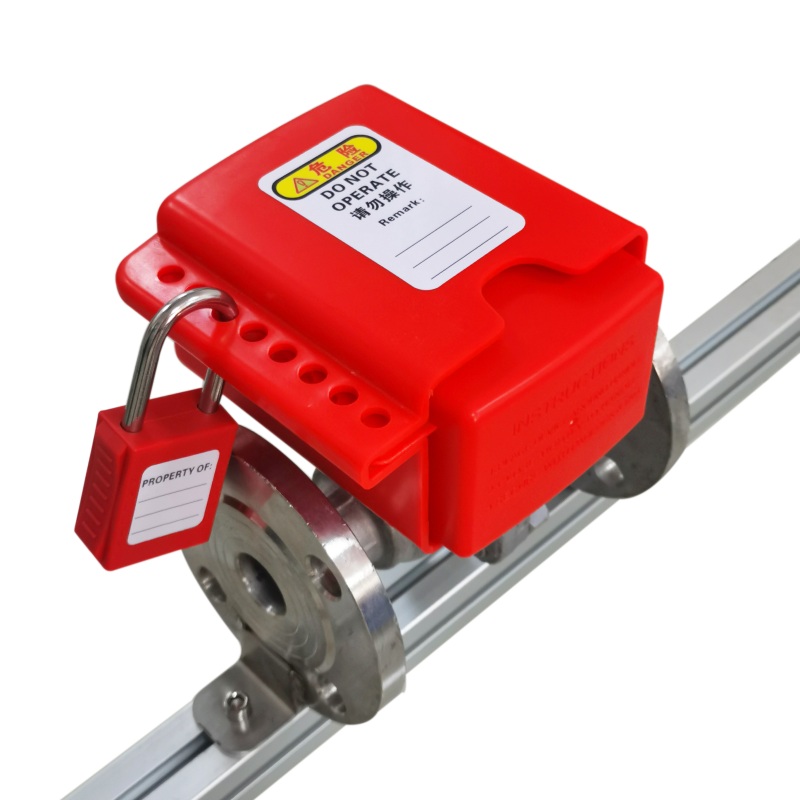
Plug valve lock
Model: EP-V42
Description: Mainly used for locking flanged ball valves/plug valves
Features:
1. Made of engineering plastics, light and tough
2. Simple structure and easy operation
3.8 hole design is easier to adjust and lock
4. Locking range: <DN150 -
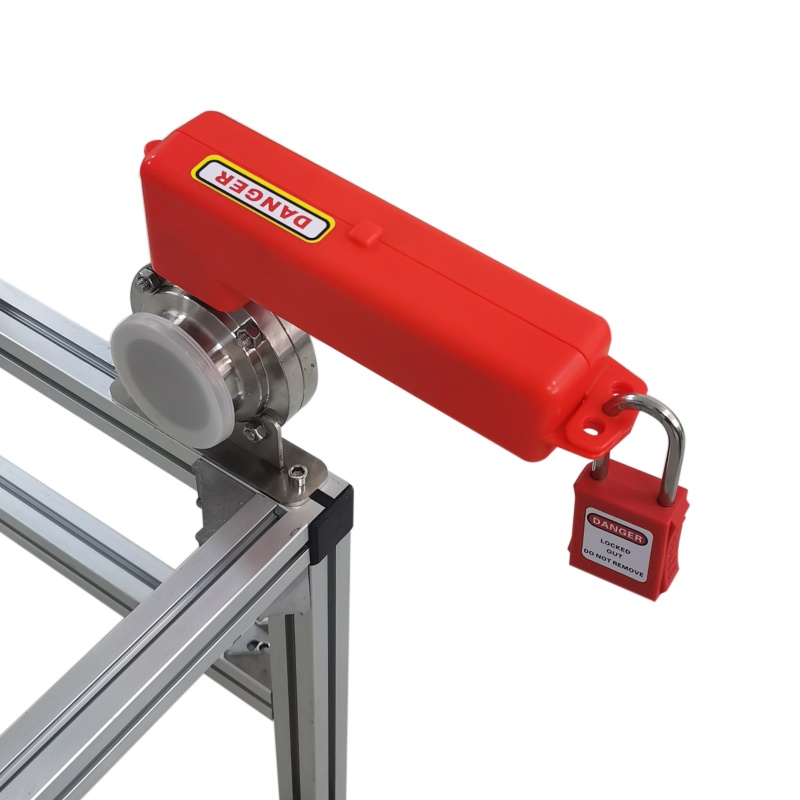
Sanitary butterfly valve lock
Model: EP-V24
Description: Mainly used for locking sanitary butterfly valves
Features:
1. Made of engineering plastics, strong and durable
2. Patented package structure design, easy to lock and easy to operate
3. It can lock most of the existing sanitary butterfly valves
4. With 2 diameter 8mm and 1 diameter 6.5mm upper lock holes -
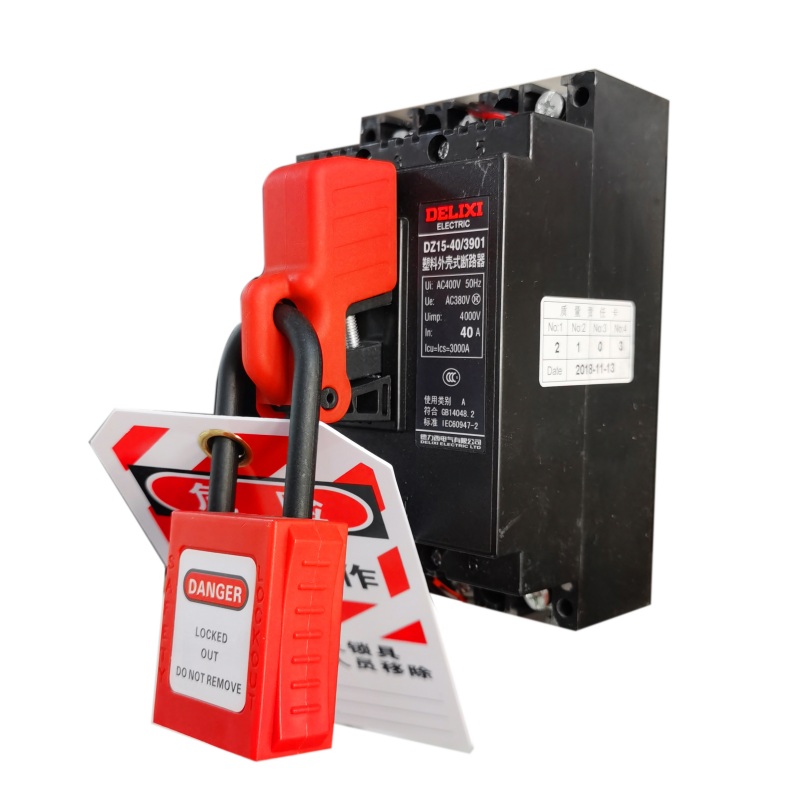
Multifunctional circuit breaker lock
Name: multifunctional circuit breaker lock
Model: EP-E15A
Description: It can not only lock the miniature molded case circuit breaker switch but also lock the miniature circuit breaker switch. -
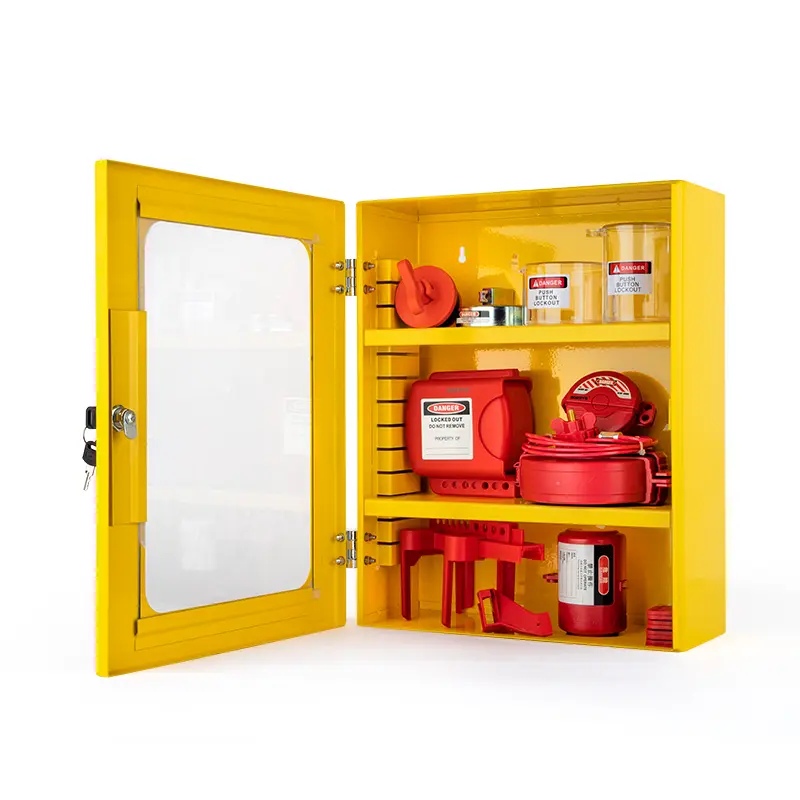
Lockout tagout stations
Model No.: EP-X07
The Lockout tagout stations size:width × height × thickness: 360mm × 450mm × 155mm,With two mobile division plates, can set the division space flexibly. -
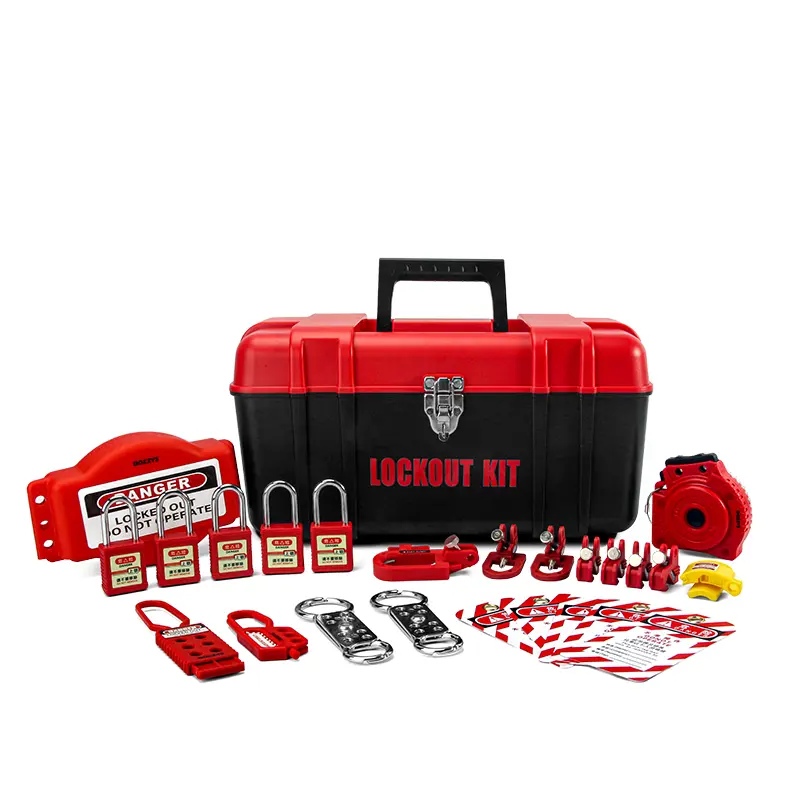
Lockout tagout kits
Lockout Tagout Kits includes:
Safety padlock *1 set
1 set of lockout box
1 set of miniature circuit breaker lockout
1 set of clamp breaker lockout
1 set of 6 holes lockout hasp
1 pcs Aluminum lockout hasp,plug lockout
1 set of emergency stop lockout
Safety Tag
FREQUENTLY ASKED QUESTIONS
-
What Are Electrical Equipment Lockouts and Why Are They Important?
-Electrical equipment lockouts are safety procedures designed to isolate machinery or equipment from its energy source(s) before maintenance, repair, or servicing. This involves physically locking switches, circuit breakers, or other energy-isolating devices to prevent accidental startup. Lockouts are critical for compliance with OSHA (29 CFR 1910.147) and NFPA 70E standards, reducing risks of electric shock, arc flash, or mechanical injury. By ensuring zero energy state, lockouts protect workers from unexpected energization, a leading cause of industrial accidents.
-
What Are the Key Standards for Electrical Lockout Procedures?
+The primary regulatory standards include:
1:OSHA Lockout/Tagout (LOTO) Standard (1910.147): Mandates controlling hazardous energy during servicing, requiring written procedures, employee training, and periodic inspections.
2:NFPA 70E (Standard for Electrical Safety in the Workplace): Focuses on electrical safety practices, including lockout requirements for de-energizing equipment before work.
3:ISO 45001 (Occupational Health and Safety Management Systems): Encourages systematic lockout protocols as part of hazard prevention. Compliance ensures legal adherence and minimizes liability while fostering a safety-first culture. -
How Do I Properly Implement an Electrical Lockout Procedure?
+Follow these steps for effective lockout:
1:Prepare: Identify all energy sources (electrical, mechanical, hydraulic) and relevant lockout devices.
2:Notify: Inform all affected workers about the upcoming lockout.
3:Shut Down: Power down equipment using normal shutdown procedures.
4:Isolate: Disconnect energy sources and apply lockout devices (e.g., circuit breaker locks, switch locks).
5:Verify: Test for zero energy using voltage testers or other appropriate tools.
6:Control: Assign individual locks with unique keys to authorized workers.
7:Release: Remove locks only after confirming all work is complete and the area is safe.Document each step and train employees regularly to ensure consistency. -
What Types of Lockout Devices Are Used for Electrical Equipment?
+Common lockout devices include:
1:Circuit Breaker Locks: Secure breakers in the "off" position, preventing unauthorized resetting.
2:Disconnect Switch Locks: Fit over manual disconnect switches to block operation.
3:Plug Lockouts: Prevent re-connection of power plugs during maintenance.
4:Universal Lockout Hasps: Allow multiple workers to lock a single energy source (group lockout).
5:Tagout Devices: Though not a substitute for locks, tags warn against energizing locked-out equipment. Choose devices rated for the specific voltage and equipment type, ensuring compatibility with safety standards. -
How Often Should Electrical Lockout Devices Be Inspected and Maintained?
+Regular inspections are vital for reliability:
1:Daily Checks: Visually inspect locks for damage or misalignment before use.
2:Monthly Inspections: Test functionality (e.g., latch mechanism on circuit breaker locks).
3:Annual Maintenance: Conduct thorough checks per manufacturer guidelines, replacing worn components.Document inspection results and replace devices at the first sign of wear—cracked plastic, rusted metal, or loose fittings can compromise safety. OSHA requires lockout equipment to be "substantially durable" and maintained in good condition. -
What's the Difference Between Lockout and Tagout in Electrical Safety?
+While both are part of LOTO procedures:
1:Lockout: Uses physical locks to prevent equipment energization; only the worker who applied the lock can remove it (unless under authorized procedures).
2:Tagout: Uses warning tags (e.g., "Do Not Energize") when locking isn't feasible. Tags alone are less effective as they rely on visual recognition rather than physical restriction.OSHA requires lockout over tagout whenever possible, as locks provide a higher level of protection against accidental startup. Tagout is permitted only when locks aren't technically feasible, but additional precautions (e.g., multiple tags, supervisor approval) are necessary. -
How Can I Ensure My Facility Meets Lockout Compliance During Audits?
+To prepare for audits:
1:Document Procedures: Maintain written lockout protocols for each piece of equipment, including energy source locations and step-by-step instructions.
2:Training Records: Keep records of employee training (initial and refresher courses, at least every three years per OSHA).
3:Inspection Logs: Track device maintenance and periodic inspections.
4:Compliance Kits: Use standardized lockout kits with clearly labeled devices for quick access.
5:Mock Audits: Regularly review processes for gaps, such as missing locks on redundant energy sources.A compliant program reduces audit failures, penalties, and most importantly, workplace incidents. -
What Should I Look for When Choosing an Electrical Lockout Supplier?
+Select suppliers who offer:
1:Certifications: Products compliant with OSHA, NFPA, and ISO standards.
2:Product Range: Diverse solutions for circuit breakers, switches, plugs, and custom applications.
3:Durability: High-quality materials (e.g., corrosion-resistant steel, impact-resistant plastic) for industrial environments.
4:Ease of Use: Ergonomic designs for quick application and removal, reducing downtime.
5:Support Services: Training resources, technical documentation, and responsive customer service.Reliable suppliers ensure your lockout system is both 6:effective and adaptable to evolving equipment needs. -
Can Lockout Procedures Be Used for Emergency Shutdowns?
+Lockouts are primarily for planned maintenance, but emergency shutdowns (e-stop buttons, pull cords) serve a different purpose:
1:Emergency Shutdowns: Quickly de-energize equipment in unsafe situations but don't replace lockouts for maintenance.
2:Lockout Follow-Up: After an emergency shutdown, follow standard lockout procedures (isolate, lock, verify) before any work begins.Never rely solely on emergency stops for maintenance—they may not fully disconnect all energy sources or prevent accidental resetting. -
What Are the Consequences of Not Using Electrical Lockout Procedures?
+Non-compliance risks include:
1:Safety Hazards: Increased chance of electric shock, arc flash burns, or mechanical injuries.
2:Legal Penalties: OSHA fines up to $13,653 per serious violation, plus potential criminal charges for willful non-compliance.
3:Downtime: Accidents can halt operations, leading to production losses and reputational damage.
4:Insurance Issues: Denied claims for incidents resulting from inadequate safety protocols.Investing in proper lockout procedures is a proactive way to protect workers, assets, and business continuity.








